With spring fast approaching (although not really fast enough) I wanted to make a blanket cozy enough for the end of winter, but also light enough to go with my spring and summer decor.
I decided a combination of linen and flannel would be perfect together.
I love the soft look of 100% linen and how it drapes so beautifully across a bed or chair.
And flannel is, of course, cozy.
Linen and Ruffle Throw Blanket Sewing Tutorial Video
For this project, I bought three yards each of this striped linen fabric and this white flannel.
(You wouldn’t really need a full three yards, but you can get it cheaper if you buy more, and I have a hard time passing up a deal! I also have my heart set on making something else for a future tutorial.)
Since two yards measures 72″ inches in length, you can definitely get by just fine with two yards. You could also make this project for a lot cheaper by purchasing plain old cotton, but I love the lightweight drape of this 100% linen.
Cut list:
46″ by 70″ piece of linen
46″ by 70″ piece of flannel
2- 6″ by 70″ pieces of linen (for the ruffles)
The linen fabric is 58″ wide, so you will have a 12″ by 70″ strip left after cutting your 46″ by 70″ piece. Cut that long leftover piece in half down the middle and you will have your two ruffle pieces.
So, first things first. I pressed the long side of one of the ruffle pieces down 1/4″.
Next, to hide that raw edge inside, I pressed it down again another 1/4″.
I then sewed that seam down for the entire length of the long side of the ruffle piece.
Next, I pressed both short ends over 1/4″, and then another 1/4″, to hide the raw edges inside.
I sewed the seams down on both short ends, so I had three of the four edges hemmed.
Next, I put a gathering stitch* in the long side of the ruffle piece that wasn’t hemmed.
*A gathering stitch is just sewing down the length of the fabric with the longest stitch that my machine allows. Since the stitch is long, it will be loose enough to allow me to pull them, and create the ruffles.
I tugged the strings gently from both ends to create a 46″ ruffle, the length of the short end of my large linen piece.
Tips for making ruffles:
Set the tension on your machine to as high as it will go. The combination of the high tension and loose gathering stitch will cause your machine to pull the fabric and create perfect ruffles, without any effort on your part.
Just make sure to set the stitch length and tension back to normal before actually sewing your ruffle onto your main piece.
When sewing ruffles to your main piece that you are working on, make sure to sew as close to the gathering stitch as possible, to keep the ruffle looking nice.
The rule of thumb for cutting a ruffle piece is one and half times the length of the piece you will be attaching it to. So, for example, if you want to sew a ruffle onto a 10″ piece of fabric, you should cut your ruffle piece to 15″ in length.
Next, I pinned my ruffle to the 46″ end of my linen piece, with right sides together. (I had the backs of my hems facing up.)
I made sure to pin the ruffle at least 1/4″ away from the edge of the fabric.
I will need that extra space to sew the flannel to, later in the tutorial.
Just be sure to leave 1/4″ on each side.
Next, I sewed the ruffle to the 46″ end of my linen, being careful to sew closely to the gathering stitch, to keep my ruffles looking nice.
And this is how the ruffle looked all sewn on.
Next, I repeated the whole process to sew the other ruffle onto the other 46″ end of the linen fabric piece.
After that, it was finally time to sew the flannel to the linen.
To keep the ruffles away from the edges while sewing, I folded them over, and placed a few pins to keep them there.
Next, with the linen piece on the floor with the right side facing up and the ruffles facing down, I laid the flannel piece on top.
It was basically a linen, ruffle and flannel sandwich.
I pinned the whole thing all the way around.
Then, I sewed around the entire thing, being sure to not sew too far away from my original ruffle stitch, to keep my ruffles from getting wonky.
I made sure to leave several inches not sewn at the end, so I could turn the blanket out and hide all the seams inside.
To close up the spot that I left not sewn, I folded the flannel under and pinned it in place, making sure to keep the ruffle edge tucked inside.
I sewed that spot closed.
Then, I topstitched* around the entire blanket.
A topstitch is just a stitch sewn close to the edge all the way around. It is “on top” so it will be seen in the finished product.
I couldn’t wait to get it down to our room to see how it would look on our bed, in a basket, draped around me (I may have swirled around in it in front of the mirror) and my kid…LOL
I absolutely love the way it turned out!
The flannel makes it so cozy and warm and I love the subtle gray color of the linen. It looks so beautiful paired with ruffles.
I have always been a ruffles girl. When my girls were smaller, I was able to get away with putting three or four layers of ruffles on their dresses and skirts. Two baby boys later, and it has been a while since I have had an excuse to sew ruffles.
Turns out linen is the best material ever to sew ruffles with. They just drape so beautifully.
I hope you try this blanket out for yourself. It was super simple to make. Now I want one for every room!
This post contains affiliate links. Get my full disclosure here.
Linen and Flannel Ruffle Throw Blanket Tutorial
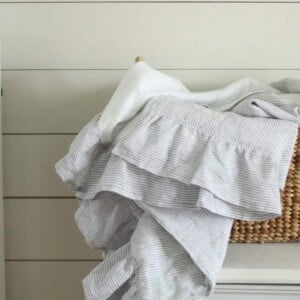
Video
Ingredients
- linen fabric
- flannel fabric
- sewing machine
Instructions
- Cut fabric as listed below.
- So, first things first. I pressed the long side of one of the ruffle pieces down 1/4″. Next, to hide that raw edge inside, I pressed it down again another 1/4″.
- I then sewed that seam down for the entire length of the long side of the ruffle piece. Next, I pressed both short ends over 1/4″, and then another 1/4″, to hide the raw edges inside.
- I sewed the seams down on both short ends, so I had three of the four edges hemmed. Next, I put a gathering stitch* in the long side of the ruffle piece that wasn’t hemmed. *A gathering stitch is just sewing down the length of the fabric with the longest stitch that my machine allows. Since the stitch is long, it will be loose enough to allow me to pull them, and create the ruffles.
- I tugged the strings gently from both ends to create a 46″ ruffle, the length of the short end of my large linen piece.
- Tips for making ruffles:Set the tension on your machine to as high as it will go. The combination of the high tension and loose gathering stitch will cause your machine to pull the fabric and create perfect ruffles, without any effort on your part. Just make sure to set the stitch length and tension back to normal before actually sewing your ruffle onto your main piece. When sewing ruffles to your main piece that you are working on, make sure to sew as close to the gathering stitch as possible, to keep the ruffle looking nice. The rule of thumb for cutting a ruffle piece is one and half times the length of the piece you will be attaching it to. So, for example, if you want to sew a ruffle onto a 10″ piece of fabric, you should cut your ruffle piece to 15″ in length.
- Next, I pinned my ruffle to the 46″ end of my linen piece, with right sides together. (I had the backs of my hems facing up.)I made sure to pin the ruffle at least 1/4″ away from the edge of the fabric. I will need that extra space to sew the flannel to, later in the tutorial.Just be sure to leave 1/4″ on each side.
- Next, I sewed the ruffle to the 46″ end of my linen, being careful to sew closely to the gathering stitch, to keep my ruffles looking nice.
- Next, I repeated the whole process to sew the other ruffle onto the other 46″ end of the linen fabric piece.After that, it was finally time to sew the flannel to the linen. To keep the ruffles away from the edges while sewing, I folded them over, and placed a few pins to keep them there.
- Next, with the linen piece on the floor with the right side facing up and the ruffles facing down, I laid the flannel piece on top.
It was basically a linen, ruffle and flannel sandwich. - I pinned the whole thing all the way around. Then, I sewed around the entire thing, being sure to not sew too far away from my original ruffle stitch, to keep my ruffles from getting wonky. I made sure to leave several inches not sewn at the end, so I could turn the blanket out and hide all the seams inside.
- To close up the spot that I left not sewn, I folded the flannel under and pinned it in place, making sure to keep the ruffle edge tucked inside.
- I sewed that spot closed.Then, I topstitched* around the entire blanket. A topstitch is just a stitch sewn close to the edge all the way around. It is “on top” so it will be seen in the finished product.
Notes
- 46″ by 70″ piece of linen
- 46″ by 70″ piece of flannel
- 2- 6″ by 70″ pieces of linen (for the ruffles)
- The linen fabric is 58″ wide, so you will have a 12″ by 70″ strip left after cutting your 46″ by 70″ piece. Cut that long leftover piece in half down the middle and you will have your two ruffle pieces.
Nutrition information is automatically calculated, so should only be used as an approximation.
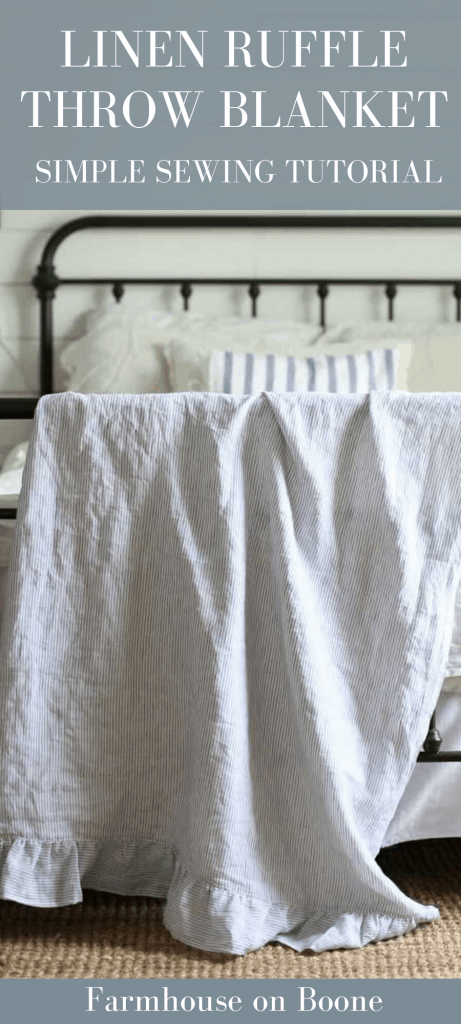
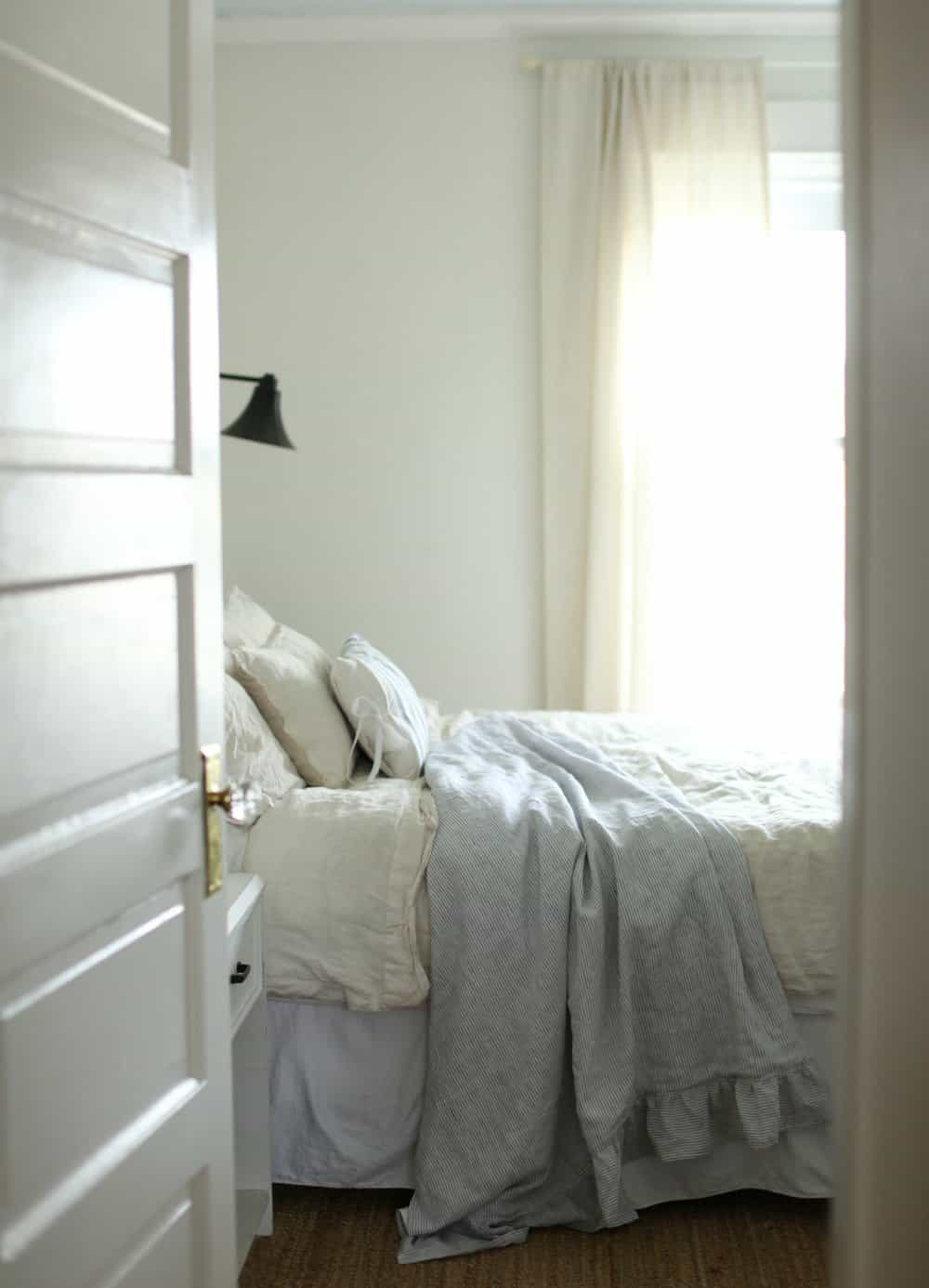
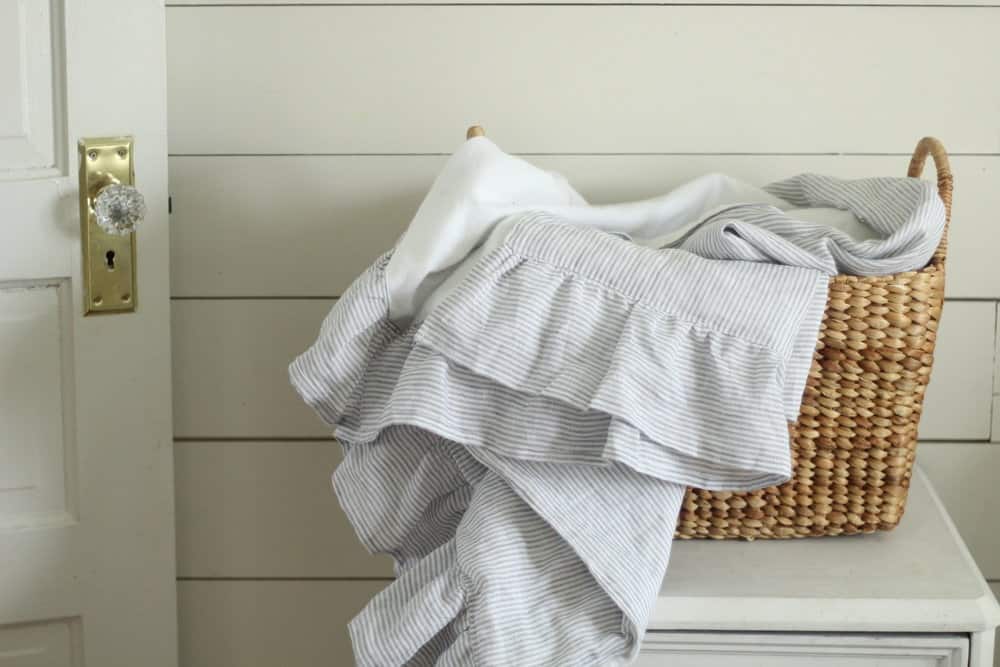
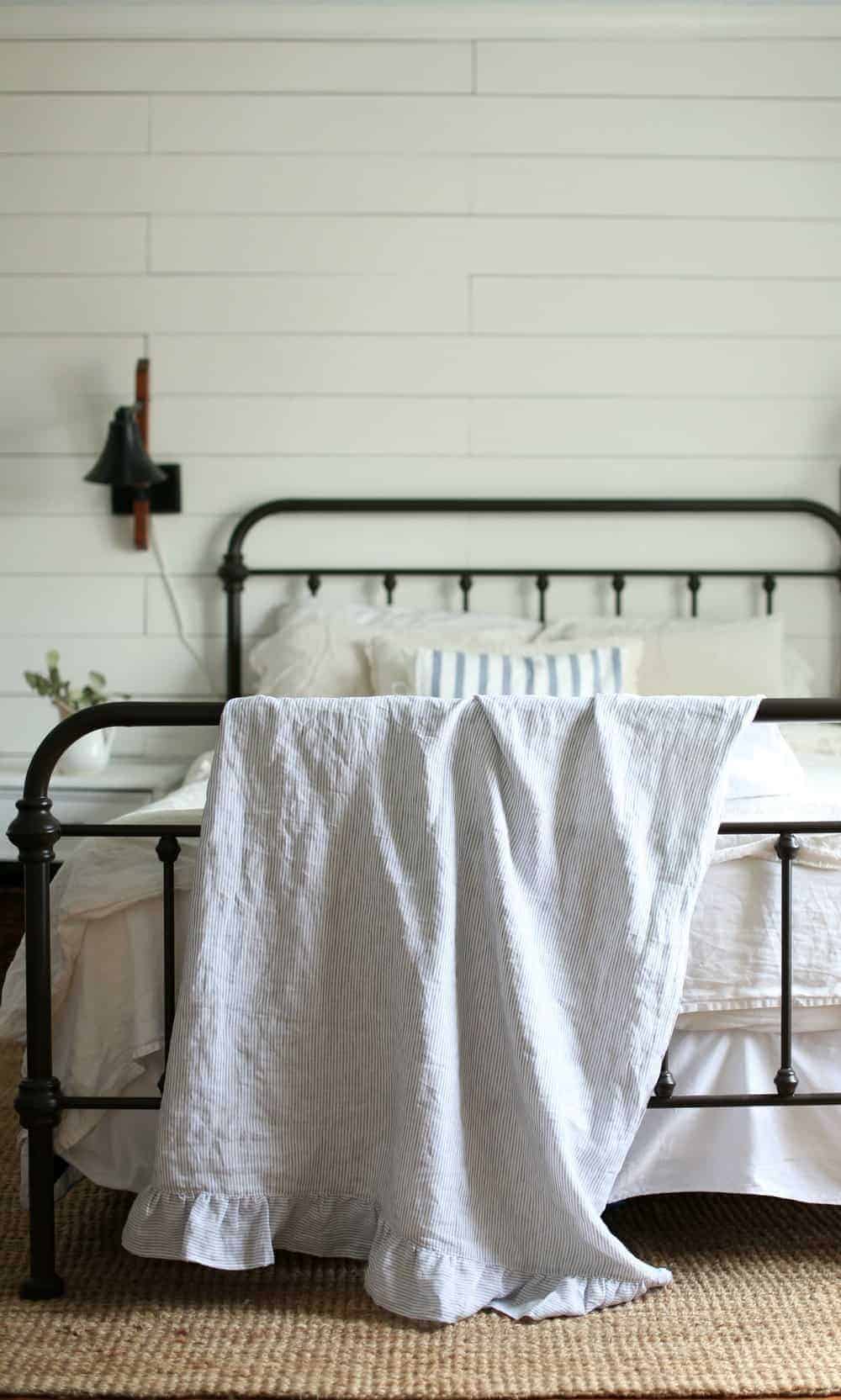
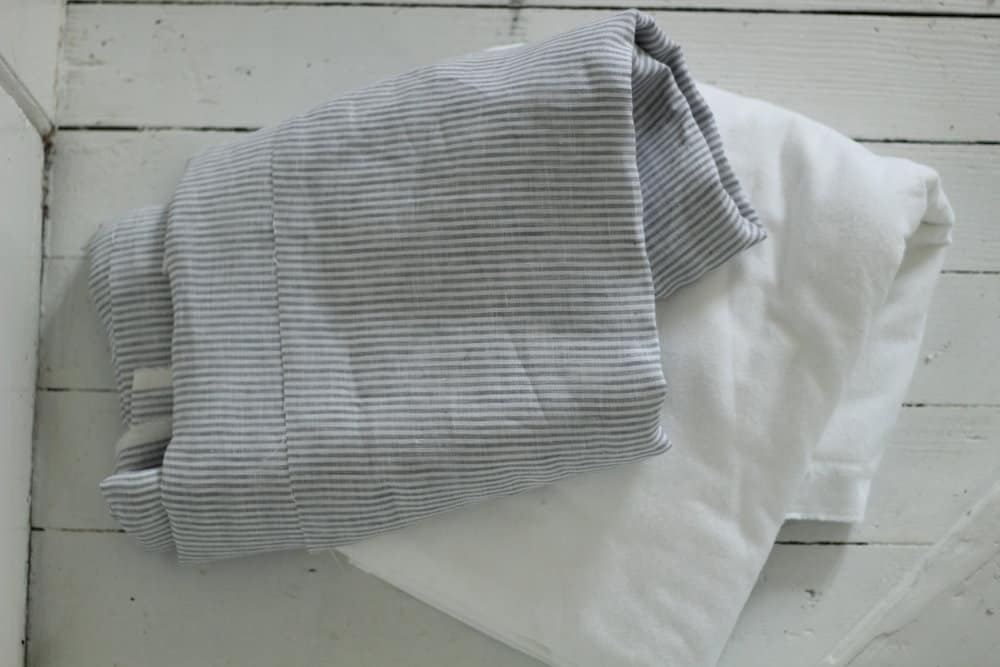
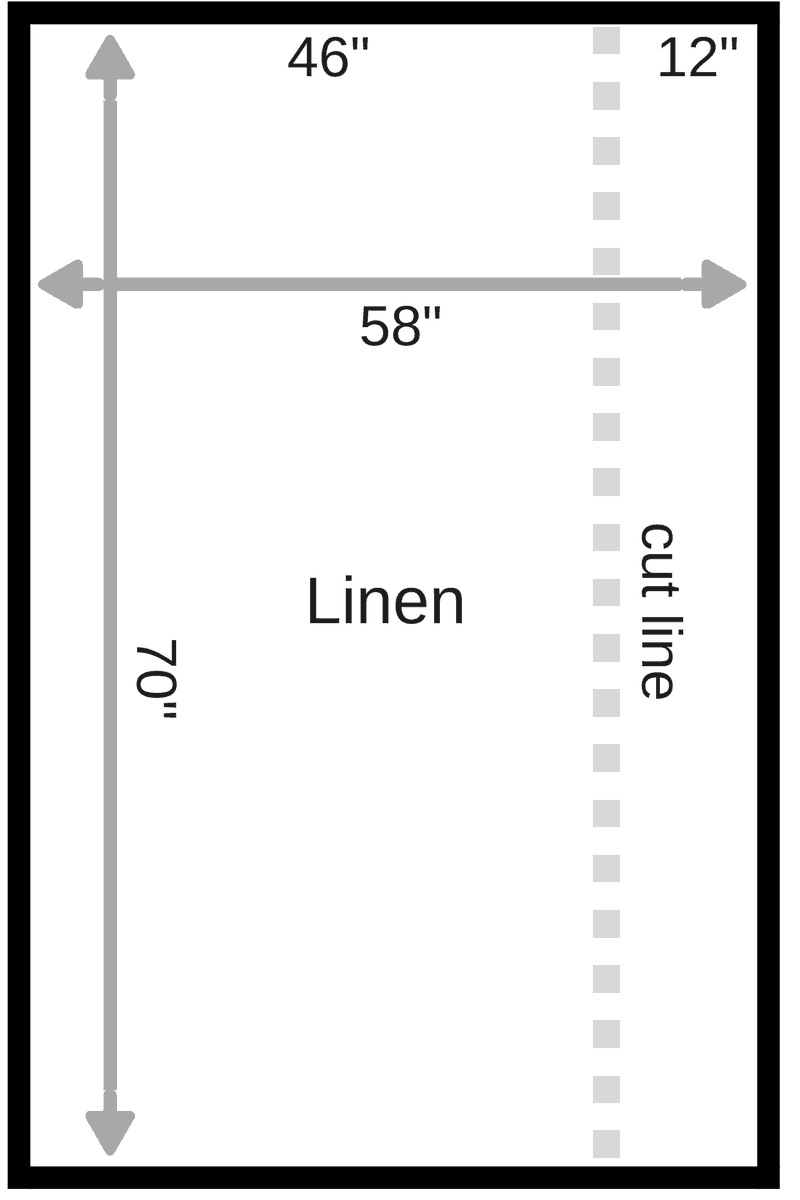

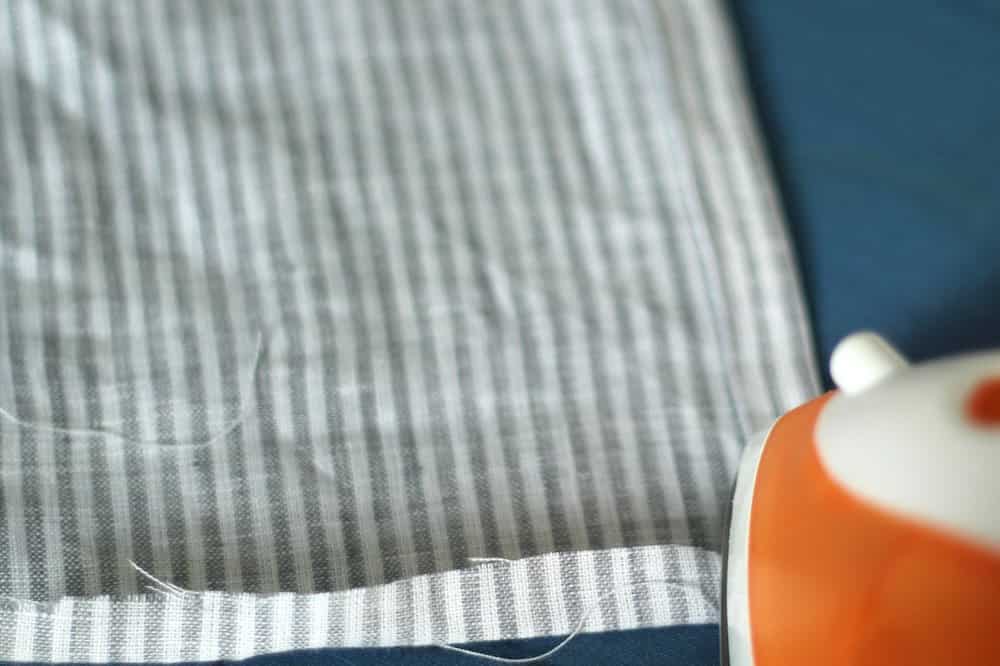
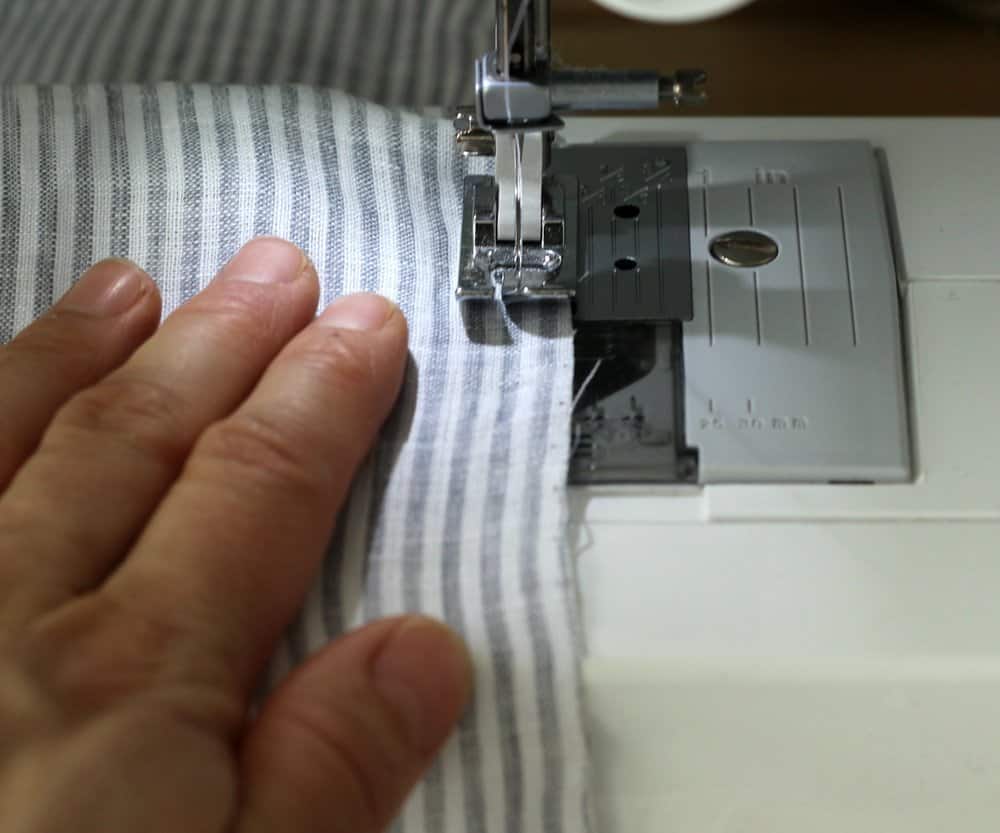
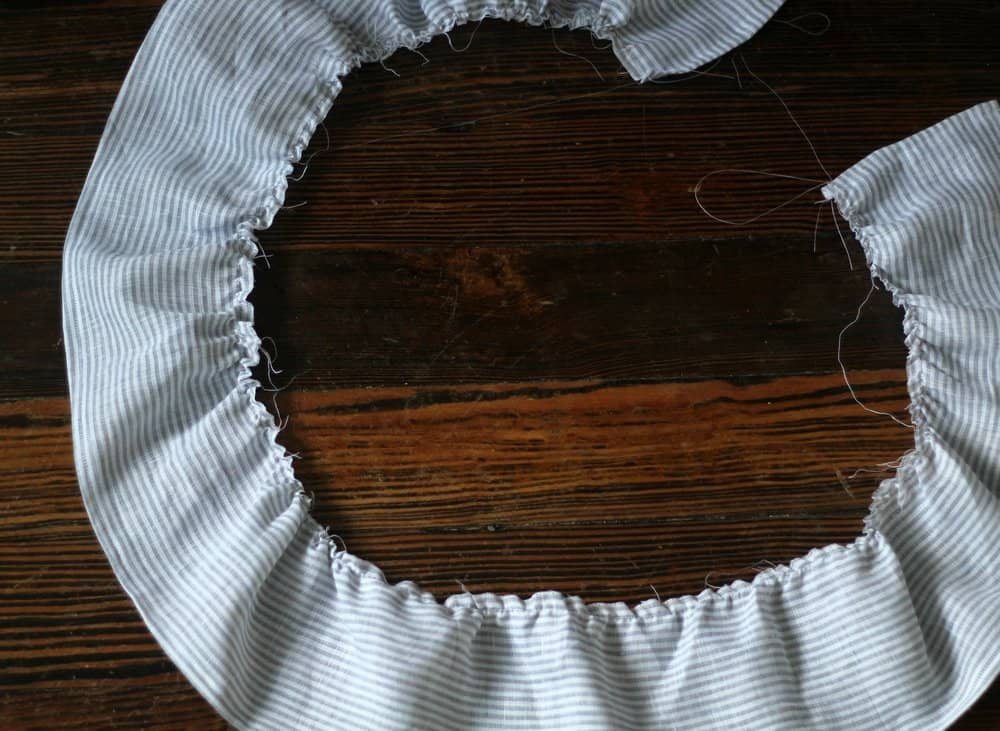
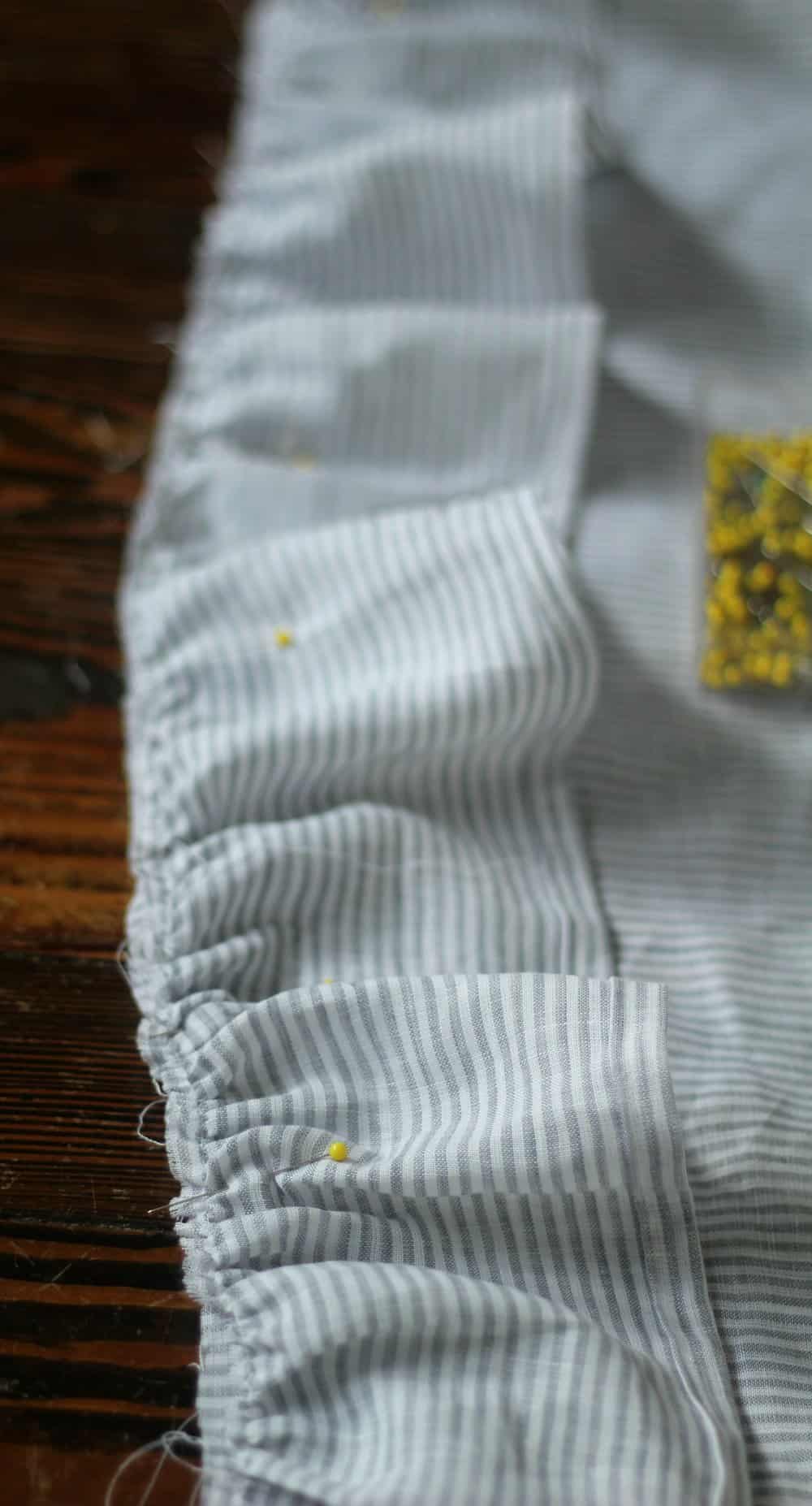
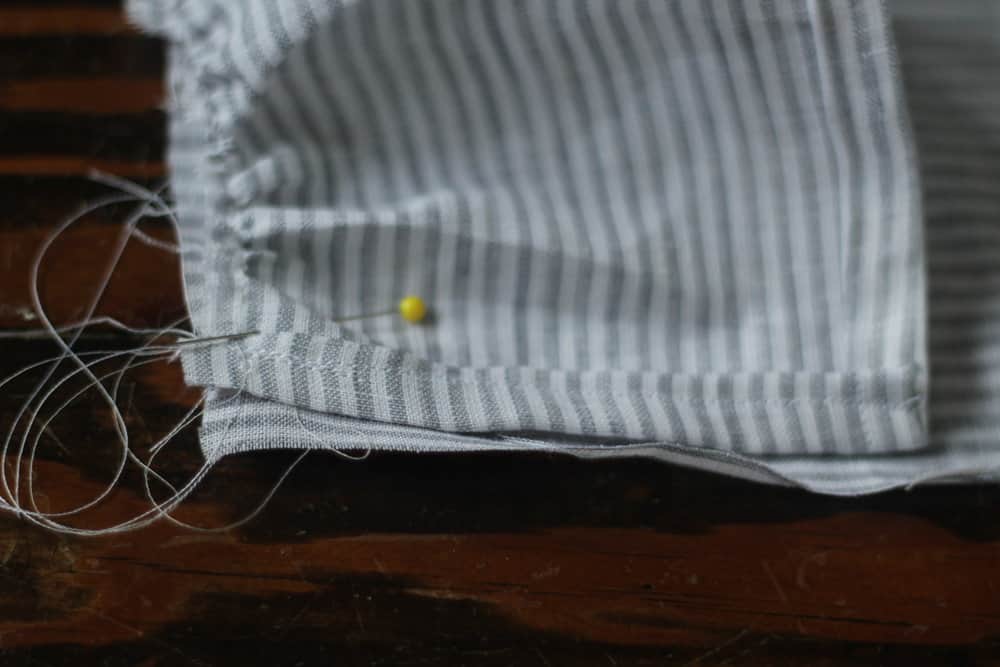
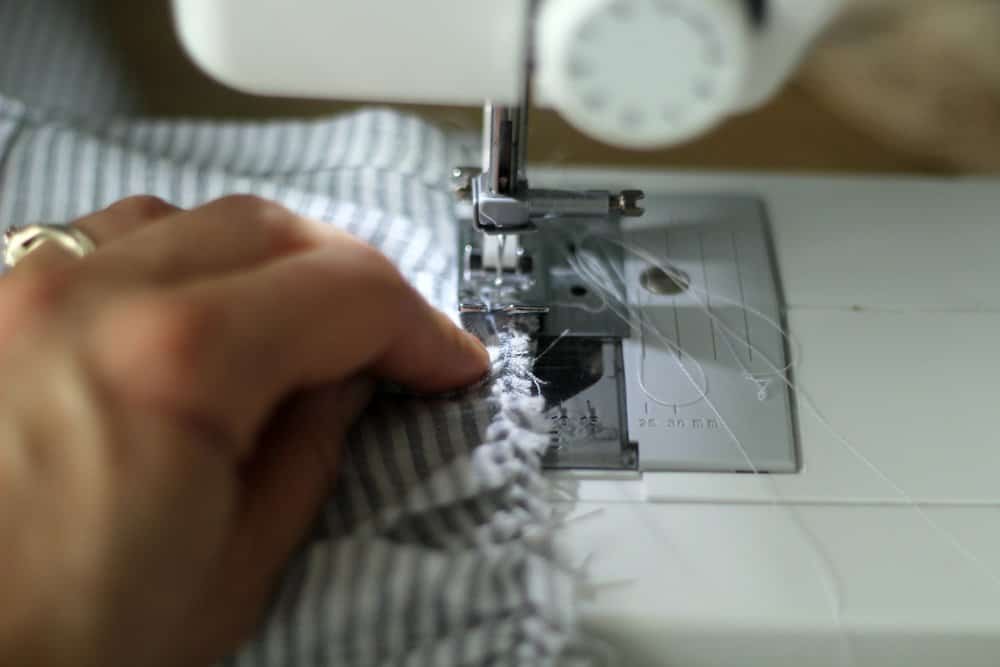
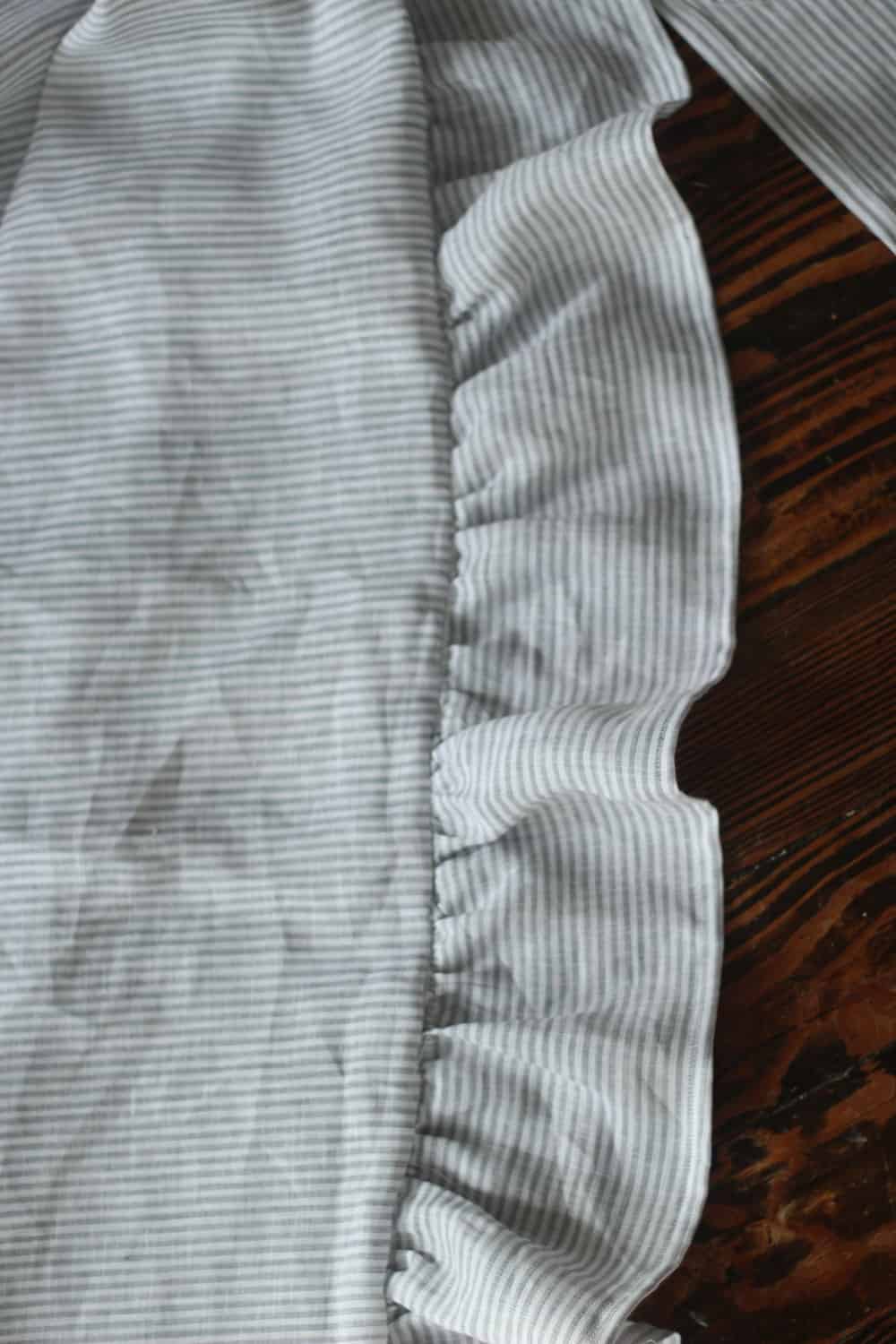
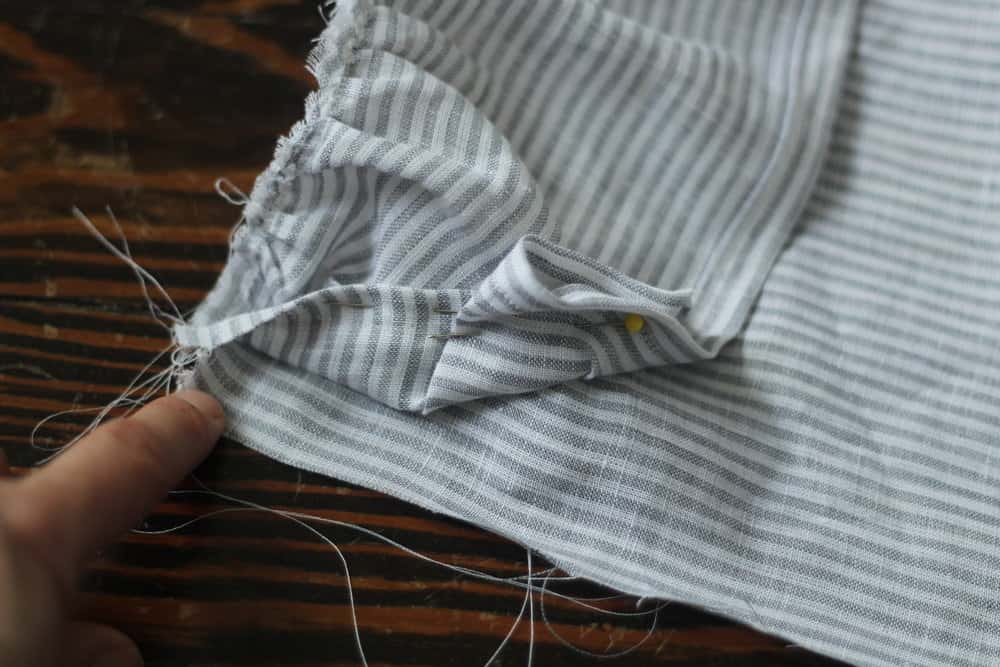
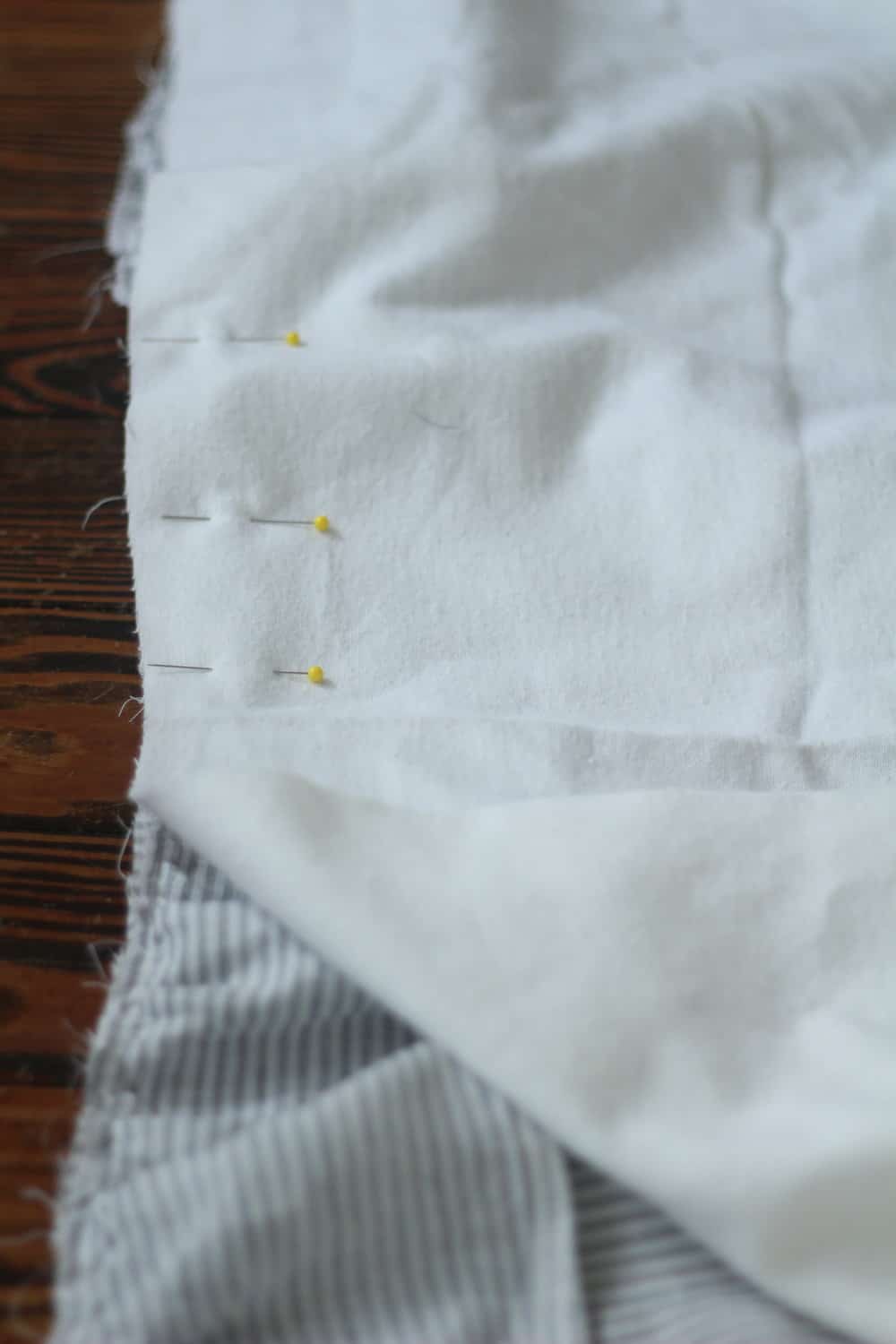
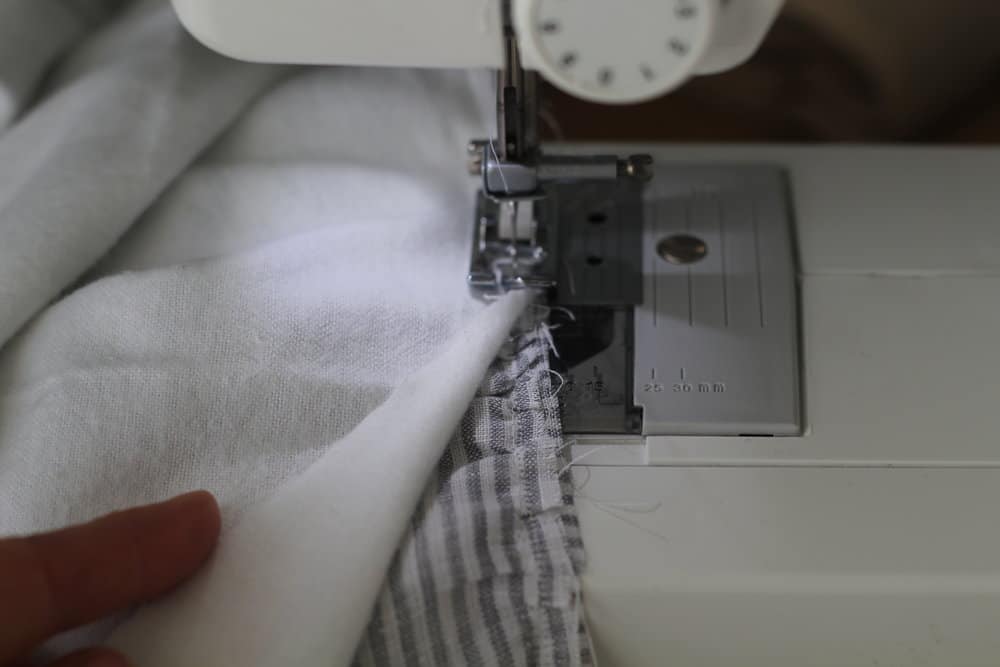
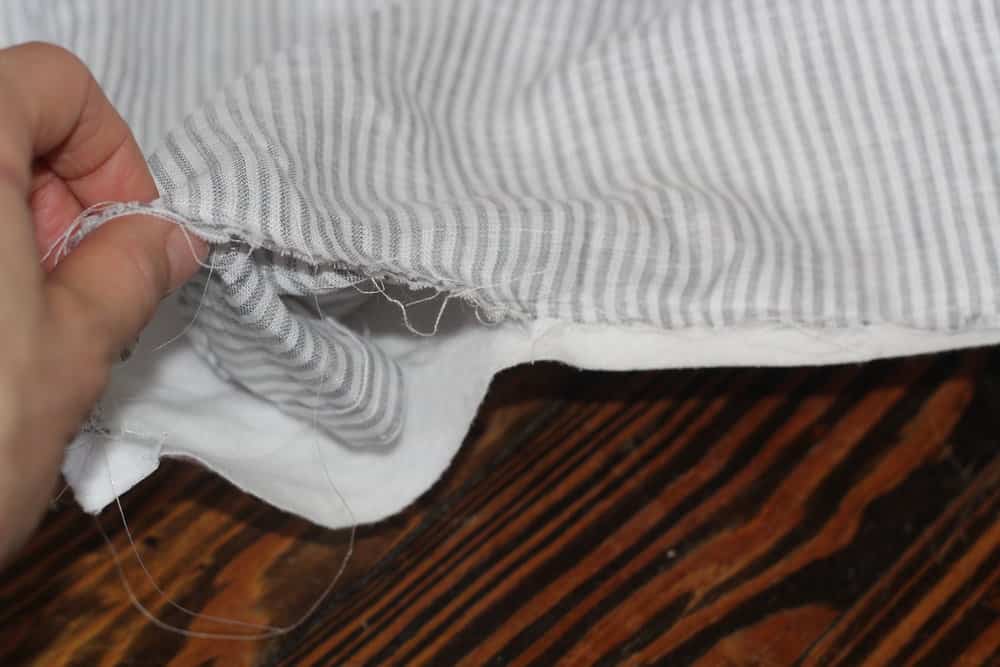
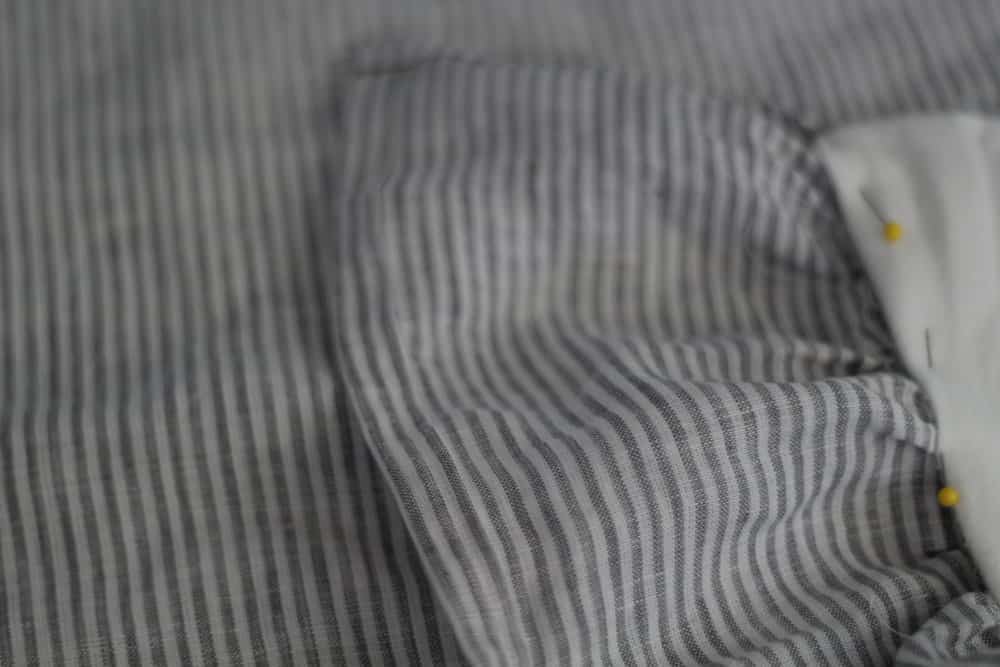
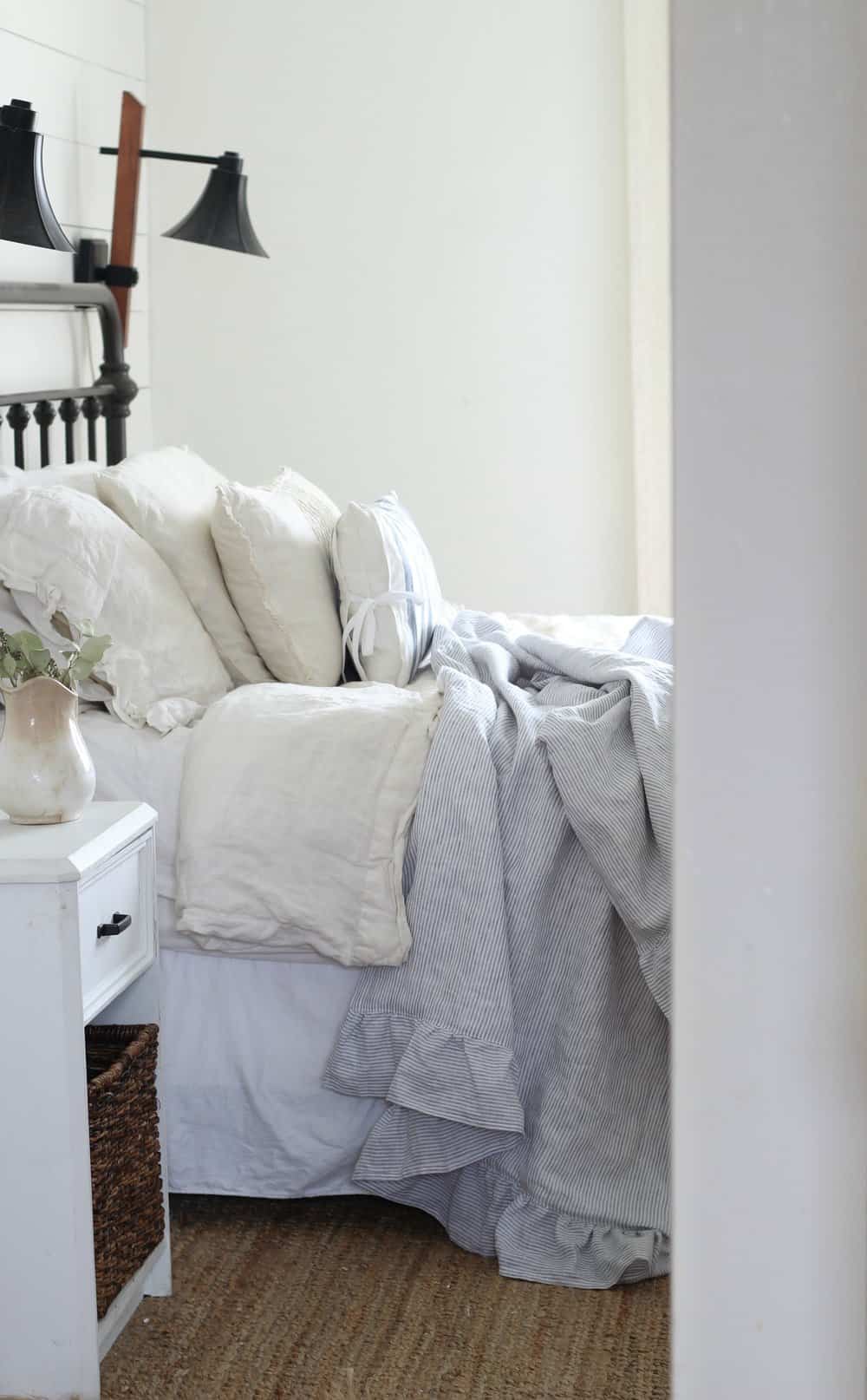
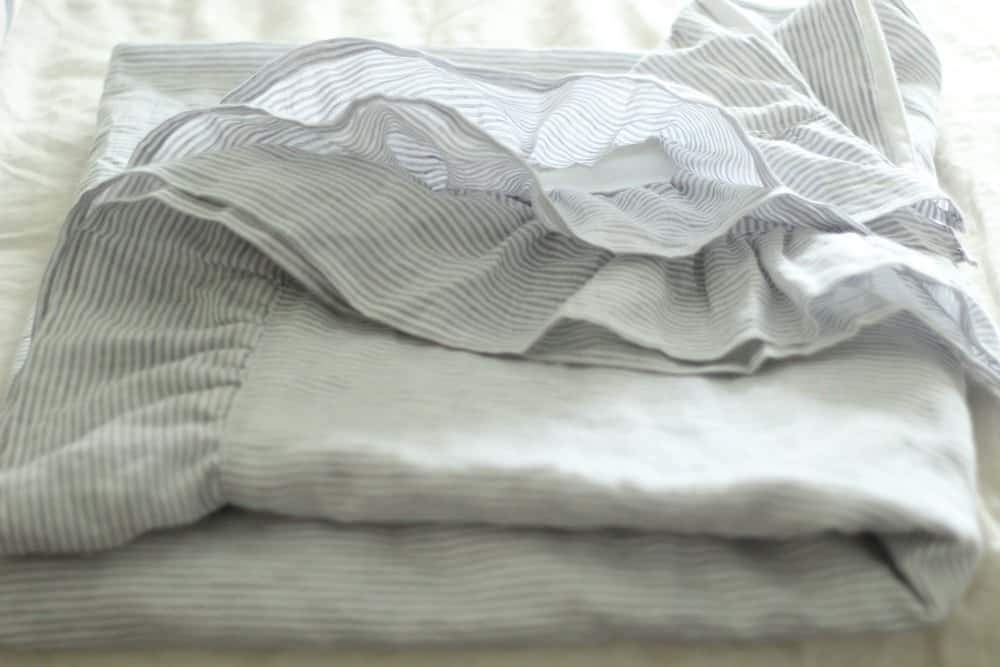
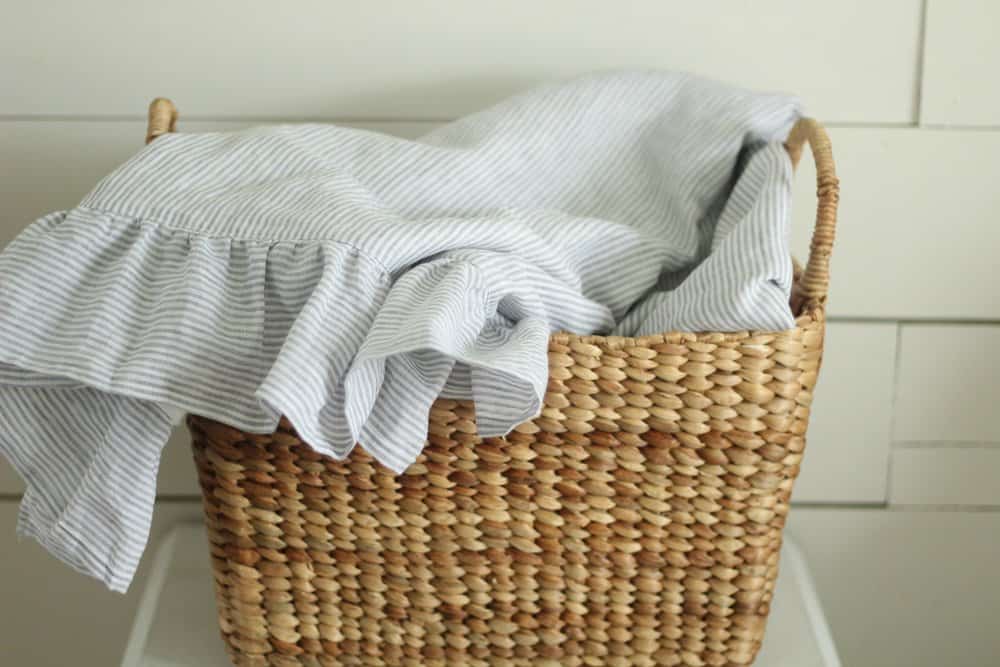
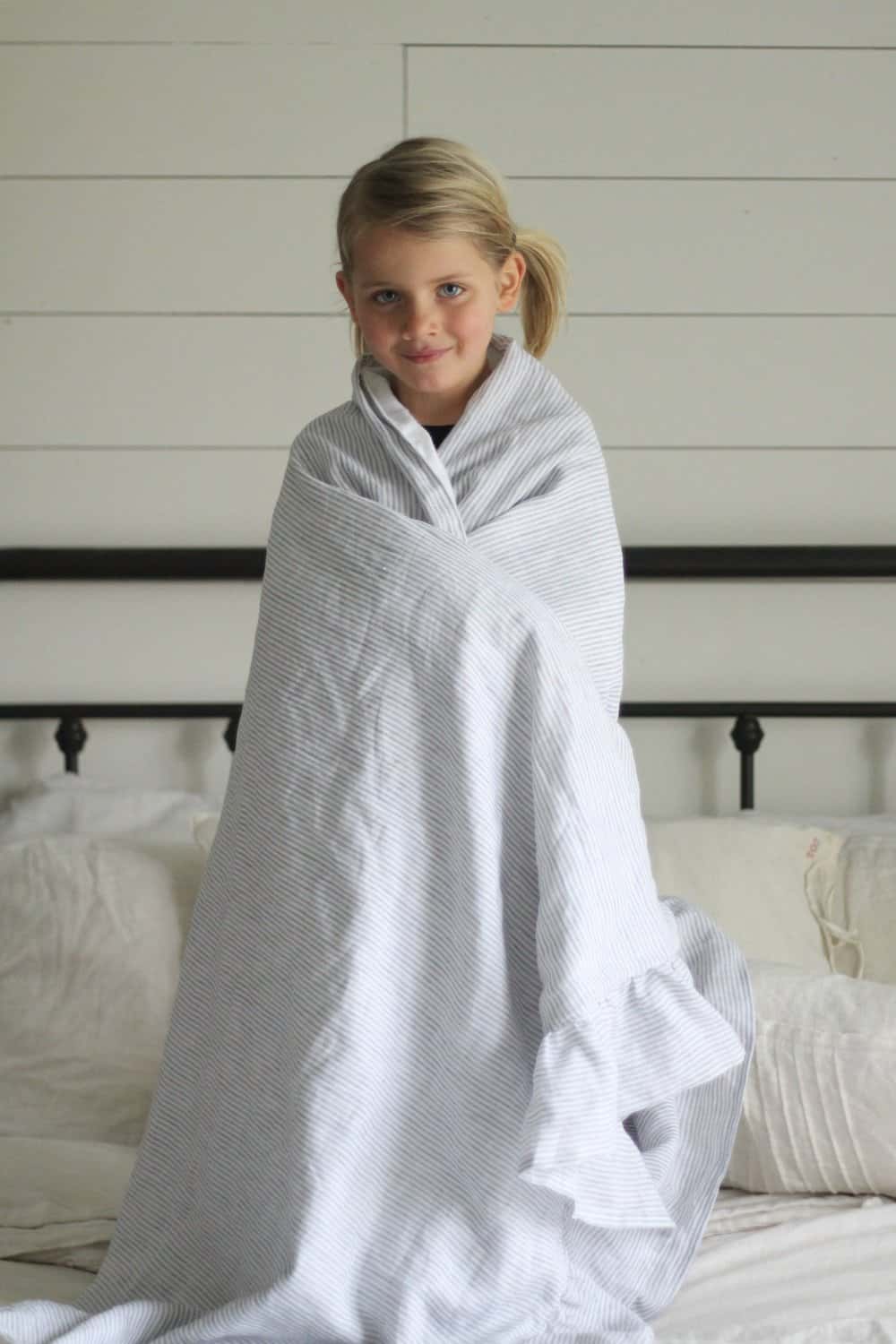
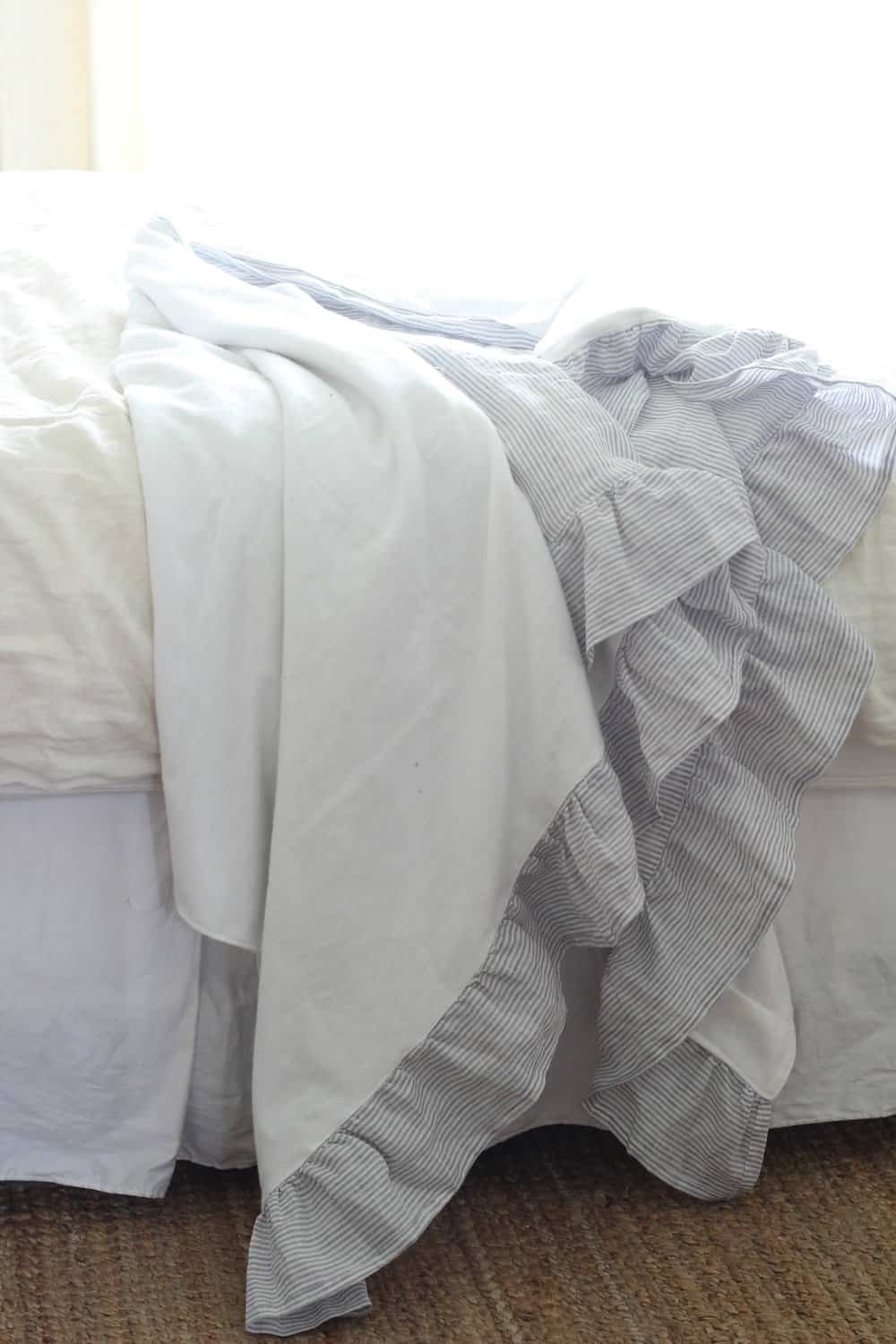
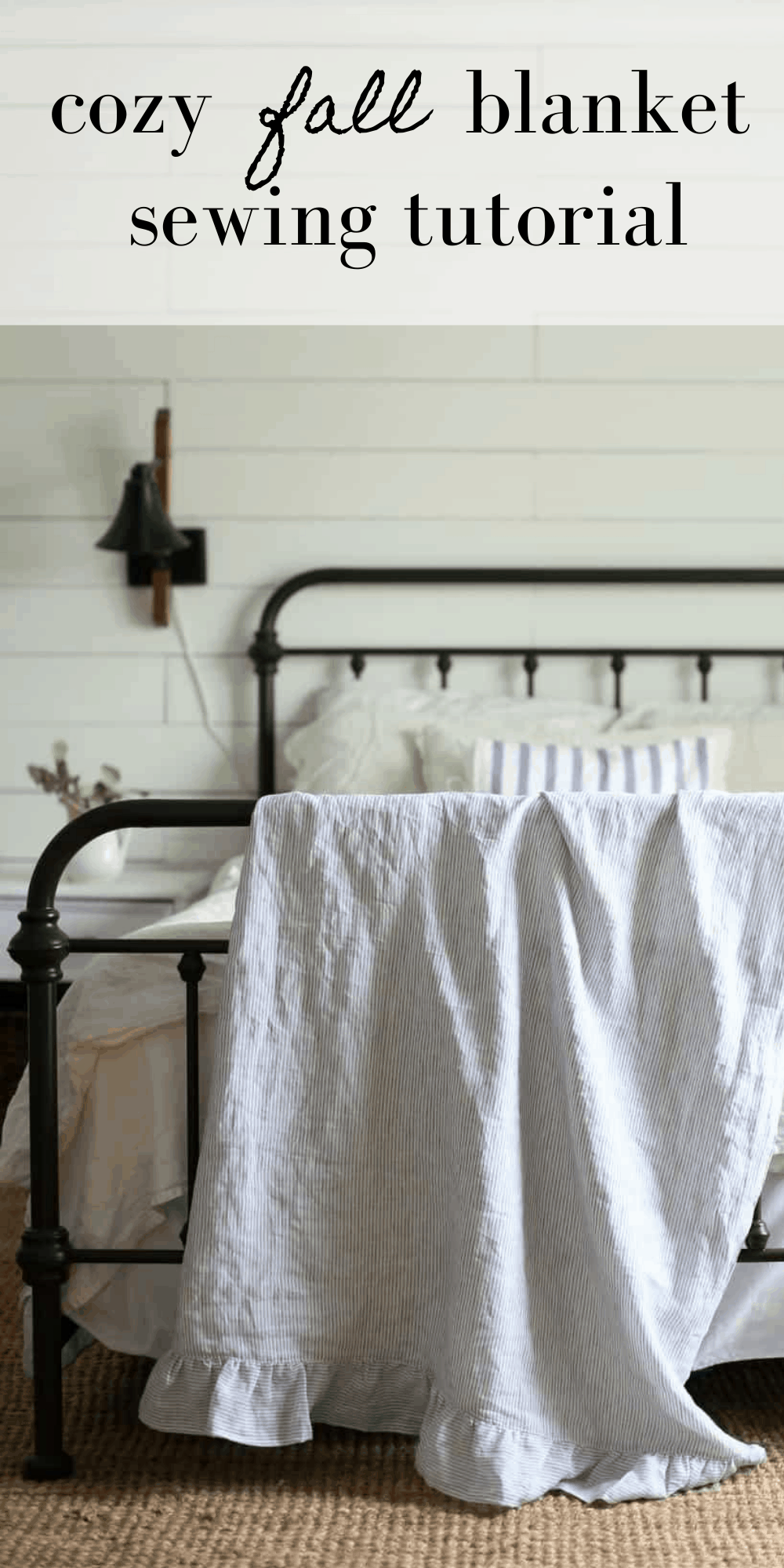
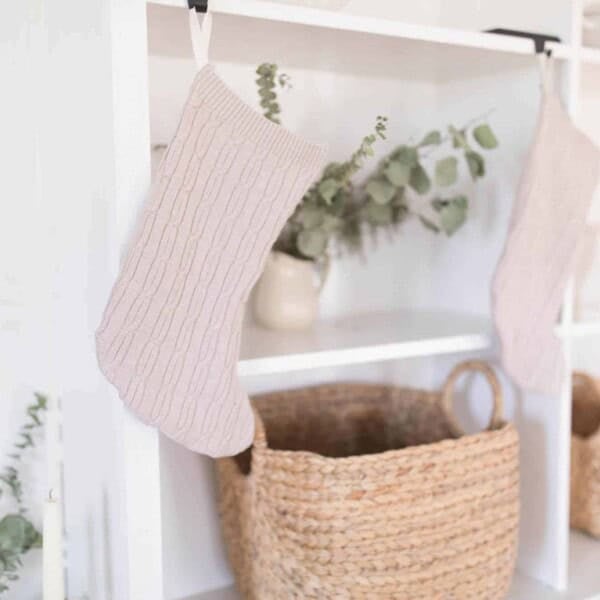


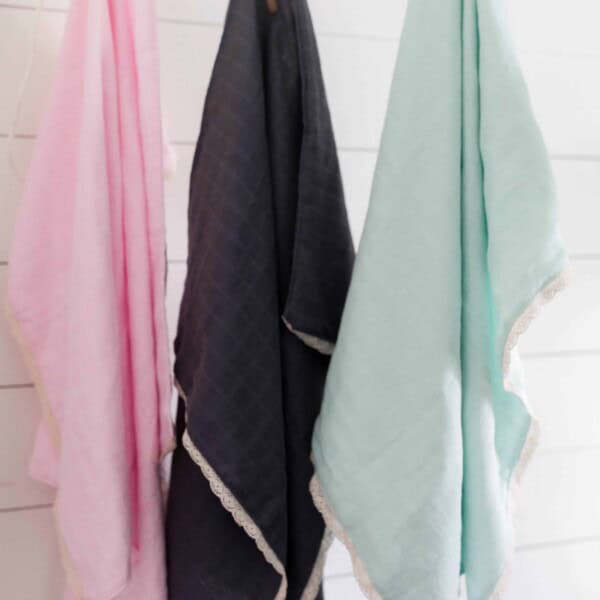






Could I make this blanket using 100% cotton?
What sewing machine model do you have?
I find it hard to find nice fabric especially during the pandemic since many fabric stores have closed. Do you order on line? Could you share which site you use. Looks like a nice winter project to get ready for a little warmer weather – thank you
I think this is something I could actually try! Not much of a seamstress (maybe sewer is a better word for me!!), but your instructions were so easy to understand, that trying it might be fun! I’ll start with one for me and if it doesn’t go to badly and look too wonky (!), I may give each of my daughters and my granddaughter one for Christmas…next year!! Thanks for sharing this beautiful idea as I’m not a quilter like my Mom was, but something like this will be a great heirloom also!!!
thanks for the idea of the throw but i think I’m going to try and make a lightweight blanket for my bed which is a queen. I’ll let you know how it comes out.
I love your throw idea mixing linen and flannel fabrics together! Such a simple sewing project and affordable that I’m considering to make several to give as gifts without breaking the bank! I also love your tutorial on the Japanese style cross back apron! I plan on making them also for myself and for gifts! Thank you for sharing your talent and ideas!
are you still selling grain sack material?please email me a answer i really need it as i have something i want to recover with it thanks much nancy
I love the cool and cozy combo thing this blanket has going on!
Hi Lisa! Congratulations on your new little one. You have a beautiful family.
As one who’s been sewing for 60 some years, I thought I’d offer you a little tip. There is a neat, inexpensive presser foot available that will gather the ruffle for you as you stitch it to the main fabric, leaving the main fabric flat – really! You can find it on Amazon, just type “sewing machine gathering foot” in the search field. Alternatively, you could buy a ruffler foot, which makes consistently sized slightly flat ruffles, but it is more complex to use and costs more. I much prefer the gathering foot, although both work well and are time-savers.
Merry Christmas and may God bless you and yours always.
I would love this could you make them and sale it I would definitely buy one